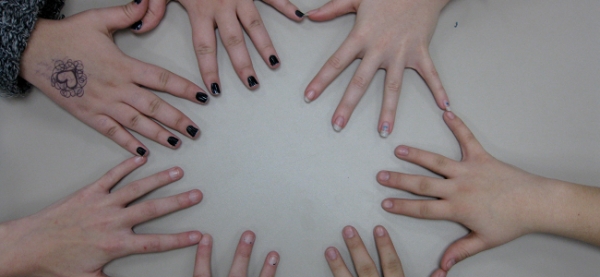Although most teachers are creating collaborative tasks for their students, arguably it can be difficult to assess them. There are indicators, and the ability to judge the outcome, but what if the outcomes are skewed because the task itself is not quite right? As Harvey S. Weiner says, in his excellent article Collaborative Learning in the Classroom: A Guide to Evaluation: "Students put into groups are only students grouped and are not collaborators, unless a task that demands consensual learning unifies the group activity”. You can read the full copy (11 pages), but I thought I’d summarise the key things I got from the piece.
There are certain questions we can ask ourselves when setting a collaborative task for students. This is basically to judge if the task is suitable to, or has the potential to, lead to an effective collaborative learning session. Weiner states: “To look only at the outward manifestations of the collaborative classroom – the fact that students group together and talk within their groups – is to look at the activity with one eye closed.”
In conclusion from Weiner’s article and my own experience, it’s important to consider the following points. Of course, a lot of educators will be excellent at doing many of these, so I believe the four key questions to ask are:
1. Does the task split the exercise into workable segments?
If there are different stages set out in your task, whether explicitly structured or just how the task naturally flows, you are on to a good start. An example would be giving students a bulk of information then asking them to first read/make sense of it together, then to organise these pieces of information into groups of ideas or themes. Breaking up the task allows for providing instructions and feedback in a timely manner rather than only at the beginning and end of the whole task. It also helps in maintaining, more or less, the same pace of progress for all the groups by having clearly defined milestones.
2. Does the exercise encourage negotiation and moving towards consensus?
One of the key things to consider here is whether your task requires the students to work simultaneously on something with the final goal of reaching an agreement. Tasks which assign each student in the group a different role can have their place in the classroom, but one that requires regular discussion, debate and negotiation, holds the true meaning of collaborative learning. If consensus cannot be reached, they should at least explicitly agree to disagree.
3. Do the questions stimulate critical thinking? Eg open questions or an ill-defined task?
What you need to avoid in collaborative tasks are well-defined problems that have an absolute correct and knowable answer. Such problems constrain the students to one final solution by following a specific procedure. What is needed then, are ill-defined problems; ones that have conflicting assumptions, evidence and opinions leading accordingly to different solutions. Research shows that students’ performance on well-defined tasks is not related to that of ill-defined ones, reflecting the fact that different sets of skills are needed for each (ill-defined utilizes more critical thinking skills).
4. Does the activity call on what students can be expected to know in a way that will lead them together beyond what they already know?
Learning normally happens when students are challenged with a problem slightly exceeding their current knowledge but not by too much. That is, if the problem falls in what is termed ‘zone of proximal development (ZPD)’ (Vygotsky). In collaboration, different students bring with them different levels of knowledge and skills, allowing them to build upon those of each other. This then leads to solving problems they may not be able to solve individually, and learning throughout the process.
5-8 are just as important, but what most good teachers do anyway:
5. Do students know what to do and how to do it?
6. Is the task clearly worded and unambiguous?
7. Is the task pertinent to the students’ needs, goals and abilities?
8. Is the task difficult enough to challenge, but not too difficult to stonewall conversations?
So if you think these points sound useful, I suggest grabbing a pen and paper and going over the questions above. Let me know what you think and if there are any other points you think could be beneficial to consider.
Do you use such strategies in your classroom? Share your thoughts below.


















